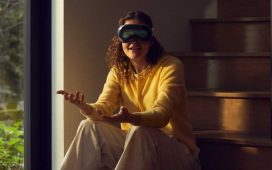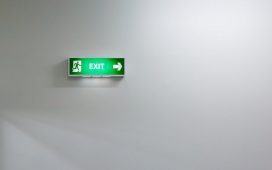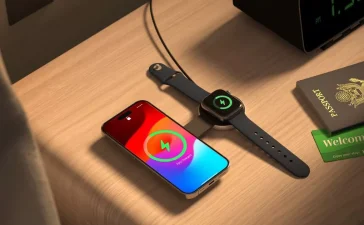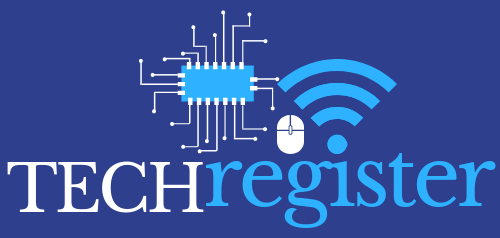I’ve seen the future of computing; I wear it every day on my head.
I’m talking, of course, about the Apple Vision Pro, the first “spatial computing” headset on the market. Though it’s not perfect — and at $3499, it’s not cheap — I can tell you after four weeks of testing and use that this augmented reality (AR) device lives up to the pre-release hype. With a blend of well-executed features and even magical moments it’s the kind of paradigm-shifting creation we haven’t seen since the original iPhone.
For that reason alone, it should be on corporate radars everywhere. Your company might not yet need Vision Pro or have the exact use case in mind to make it worthwhile. But that day is coming.
What exactly is the Vision Pro?
The Vision Pro represents an entirely new way of computing, encompassed in what’s essentially a large set of ski goggles made from glass, aluminum, and soft fabric. You wear it on your face, the interface floats around you, you navigate with your eyes (the precision of which is one of those aforementioned magical moments) and you control on-screen elements with mid-air gestures (such as a pinch of your fingers).
Forget desktop computing, where all your application windows and data are on a screen; once wearing the headset, your entire environment is your “screen” where apps, icons and windows float before you. The Vision Pro feels like the futuristic hologram technology envisioned in Minority Report and Star Trek, albeit within the limits of current technology. (More about those limitations in a bit.)
First introduced last year, Vision Pro went on sale on Jan. 19, and rolled out to customers and store shelves on Feb. 2. I pre-ordered and had my own Vision Pro the first day of availability. Even the pre-ordering process felt futuristic, beginning with a face scan (using the iPhone) to determine individual face size. This was followed by a brief questionnaire about any vision correction needs. (Each device is personalized depending on those needs, but not all vision types are supported.)
I opted for the 512GB model, which added $200 to the base cost for an out-the-door price of $3,699 plus tax. While a significant investment, I didn’t want to be hampered by storage limitations.
The Vision Pro box included the headset, a battery and cord, a 30-watt power supply, two versions of the head band, a goggles cover, a micro-cleaning cloth, two light seal cushions (one thin and one a little thicker), and a set up brochure. In fact, set up was a breeze, thanks to Apple’s robust ecosystem. With minimal configuration — including the hand- and eye-tracking setup, which took a few seconds — the device seamlessly integrated with my iCloud account, providing instant access to the data already stored on my iPhone, Mac, and various Apple devices.
Inside the curved glass display is the lone configuration: it uses an 8-core M2 processor (4 performance cores, 4 efficiency cores), a 16-core Neural Engine (for machine learning, artificial intelligence, and image processing), and 16GB of unified system memory. There is also a custom R1 unit that processes all of the sensor data in real-time as well as powering the extremely low-latency display.
Not my first VR rodeo
Some context: I’m no stranger to virtual reality headsets. I’ve used the Oculus and Sony VR and VR2 in the past. The Vision Pro feels entirely next-level in quality compared to those (and other rivals) because of the materials used: laminated glass on an aluminum frame feels better than the plastic alternatives. The downside, as well noted already, is that the Vision Pro, while smaller and sleeker, is heavier. And that weight is noticeable after a few hours. While 1.3 pounds, depending on configuration, might not sound like much weight, having it pressed against your sinuses for a couple of hours tells a different story.
(Pro tip: there’s another band included with the Vision Pro that offers better weight distribution than the default band. Use it.)
The goggles themselves are a technological tour-de-force: twelve cameras track the environment, your eye movements, and gesture recognition with pass-through-video featuring precision positioning of digital elements; there are six microphones and a lidar sensor system; an accurate eye tracking system with Optic ID (Face ID for your eyes); a very much under-rated spatial surround sound system; and two 3.6cm micro-OLED displays that have to be used to be believed. The two 3660×3200 HDR panels pack so many pixels in front of your eyes that you simply accept graphics and data as just there.
After setting up the Vision Pro, you look around and see your surroundings. If there’s enough ambient light, the video in front of your eyes will pass for a good approximation of what you’d normally see in stereovision with full depth perception, albeit with a narrower field of view. You press the digital crown on the upper right of the headset to bring up an application list, a la the Apple Watch and this is when you get the first taste of spatial computing: that application list floats in front of you, casting shadows on real-world objects from real-world light sources.
This is the strength — and hook — of spatial computing: the seamless blending of reality with your data and content. It’s a new era of computing, where the traditional elements of a MacBook Pro — CPU, display, and input — are reimagined for your face. Gone are the limits of displays; apps and data can be everywhere around you.
Business-worthy or business-bust?
So, in its first incarnation, is the Vision Pro a consumer-focused, ultra-expensive game-playing, movie-watching gadget, or could it become the most personal business computer to date?
Yes. And maybe.
There are benefits to the form factor. Because the entire computer is strapped to your face, privacy is unmatched. Unless you’re sharing what you see via the built-in Airplay mirroring, the data on display is completely private to you. The Vision Pro can also replicate a Mac’s display, with the Mac screen projected into the Vision Pro and the actual laptop screen showing nothing. The inherent privacy means that sensitive corporate information — say, HR data — could be viewed in complete confidentiality in a crowded room.
The Vision Pro’s form factor is particularly useful in situations where you need a computer while also using your hands to interact with tools and the environment. Vision Pro offers a hands-free, immersive interface which allows users to stay engaged while accessing data and information in line-of-sight.
For instance, I can type on my MacBook Pro’s keyboard in Microsoft Word while keeping an eye on my daughter via a floating video feed just below my Outlook and Teams windows. A surgeon might need to see an overlay of a CT scan or MRI directly on a patient during a procedure. An architect could visualize blueprints or CAD models in real space, where adjustments to designs can be made in real-time. Front-line logistics and warehouse workers could have real-time access to important data (such as inventory levels) at-a-glance; and trainers (military? astronauts? athletes?) could practice lessons in a virtual world more forgiving of mistakes than the real world.
That’s the promise what Vision Pro can, in theory do. The reality right now for the business world is less certain — and depends in large part on software developers and applications. A device is only useful as a tool if you’re productive with it in ways you wouldn’t be with some other combination of hardware and services. While spatial computing is a cutting-edge framework to use, real productivity will depend on software.
According to Apple CEO Tim Cook, the Vision Pro had more than 1,000 native and compatible apps within a couple of weeks of launch, including corporate mainstays from the likes of Microsoft. These include Teams, Word, PowerPoint, and Excel. (And the company’s Outlook app for the iPad works well enough that it might as well be native.)
That library of apps will only grow. And the ever-evolving App Store already offers apps that are groundbreaking. One of them, A Magic Room, uses Lidar to map your immediate surroundings, adding basic geometry textures to a local environment’s walls, ceilings, floors, and objects in real time. This, effectively, allows you to “see” in the dark.
Or you can download a Wi-Fi connection tool, AR WiFi&5G, that lets you place markers in specific locations in your environment indicating the network latency of that exact spot. (Handy at home, it would also be useful in large factories or even outdoor areas where consistent Wi-Fi connectivity is a must.) There are medical apps that allow you to manipulate a beating heart; presentation apps that allow you to disassemble jet engines; Keynote lets you practice a presentation as if you’re on stage at the Steve Jobs Theater at Apple; and a TeamViewer app can remotely control other devices for those in IT support.
Beyond the collection of specific apps, there’s a Trojan horse app that is already built in: Safari, Apple’s web browser. With the Vision Pro, it’s a powerful gateway to a slew of enterprise uses. Think of it this way: most enterprise device, data, or user management systems are accessible through a web portal. That means Jamf Pro, Citrix Endpoint Management, Microsoft Intune, Adobe user management console, and many others — along with a variety of IT help desk solutions -— can be accessed using a browser. A solid web browser like Safari opens the door to a lot of enterprise uses for Vision Pro (and the ability to access existing systems, privately, might be a compelling case for business).
But there are limitations…
It’s hard not to appreciate the engineering that went into developing this device, but that doesn’t mean it’s perfect. The virtual keyboard is hard to use – you’ll need a real one for speedy typing.
You’re tethered to a battery about the size and weight of two iPhones — and that battery only lasts about two-and-a-half hours (three, max).
And as already noted, the headset is heavy. No software updates can fix that.
It was also immediately apparent that the outward-facing cameras aren’t great in low-light conditions, displaying noise and compression artifacts. I was originally disappointed by their performance, but the extremely low latency proved more critical to the overall experience than visual clarity. This is an area Apple is no doubt working to improve in future versions.
There are many issues that can be fixed with software, however. For example: the Vision Pro would fit better into the enterprise if VisionOS already supported MDM options such as Jamf Pro or Microsoft Intune. While that support is coming, it wasn’t there at launch. Other “missing” features include basic customization such as home screen management; users can’t (yet) modify app icon placement, create folders, or place widgets on the app screen.
And there’s no doubt that using Vision Pro is isolating. (For some, that might well be the point.) But the headset needs more collaborative features, such as seeing what others on the same team see with their Vision Pros. The ability to share workspaces and content within apps among Vision Pro users would greatly enhance collaboration.
Beyond those specifics, the long-term prospects of success lie with support from heavy-hitter app developers. Right now, Vision Pro apps that are “just as good as an iPad” might be enough to compel die-hard Apple users and deep-pocketed tech enthusiasts to spend $3500. But if this device is to attract a wider audience, the software written for it needs to integrate features that can only be performed on the Vision Pro.
Final thoughts on the Vision Pro’s future
As is, the Vision Pro is a first-generation product running 1.x software: there are good aspects and bad, baffling decisions, and missing features. It’s also amazing. The execution of the concept is surprisingly strong. And that’s what works the best with Vision Pro — learning that spatial computing is a realistic way of working day to day, not just a sci-fi dream. The way the apps and windows stay locked in, and the way Vision Pro blends reality with content and data, really do make it a paradigm shift in how people use computers.
Despite its nascent technology, the Vision Pro sets a high foundation for future iterations. And while it sounds trite, it’s a device that really needs to be experienced to be truly understood. That very experience — life-size floating app windows and virtual environments — is the killer application.
What about right now, though, as business users ponder the Vision Pro and try to measure the return on investment. Can the apps you use run on the device? Is the rationale for owning one (or 10, or 100) worth bringing in another device to support? Is the ROI worth at least the initial investment in hardware, software, warranty, training, and support?
In limited cases…perhaps. The Vision Pro works well where privacy is imperative and could be a godsend where real-time data access and real-world interaction is key, enabling users to stay engaged with their environment while accessing layers of visual information that complements their tasks.
Vision Pro, as is, won’t be the correct fit for everyone. As is, there are as many reasons to hold off buying as there are to buy. That said, think of the first iPhone in 2007, before cut, copy, paste was possible, before there was an App Store, and before it even used a modern cell network. “Too expensive,” critics said. “Doesn’t do enough.” “Touch screen gestures are weird.”
Like that original iPhone, the Vision Pro is the start of something big — not the ending. Its ability to blend digital and physical worlds is nothing short of revolutionary. It does have a place in the working world. It just needs time to mature.
Copyright © 2024 IDG Communications, Inc.









